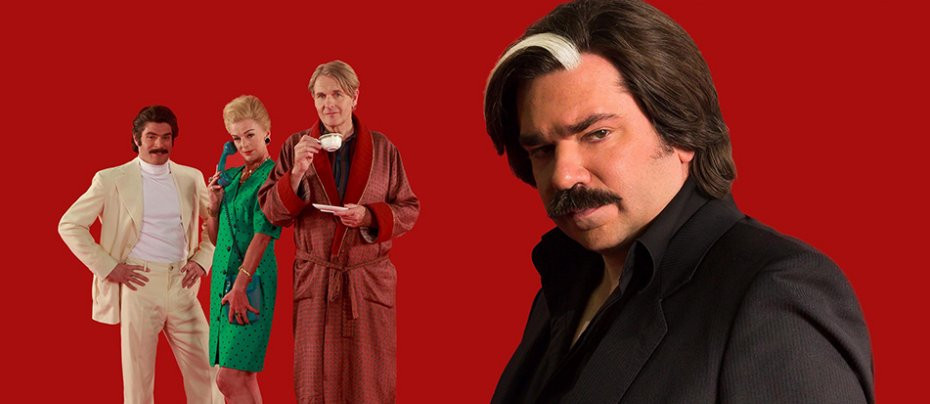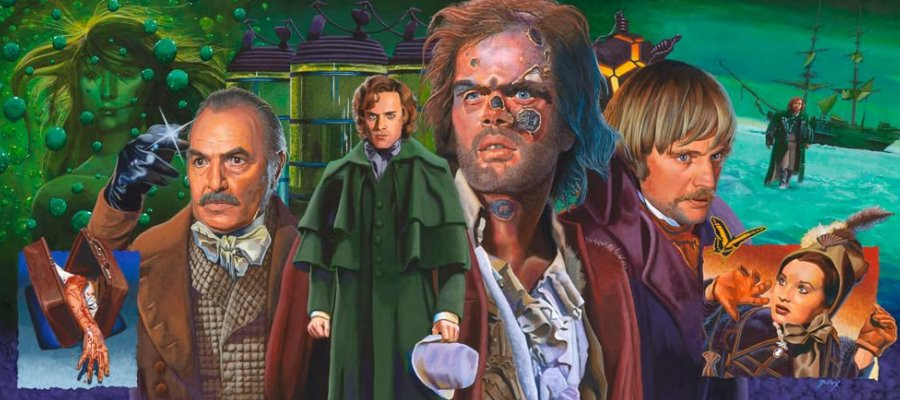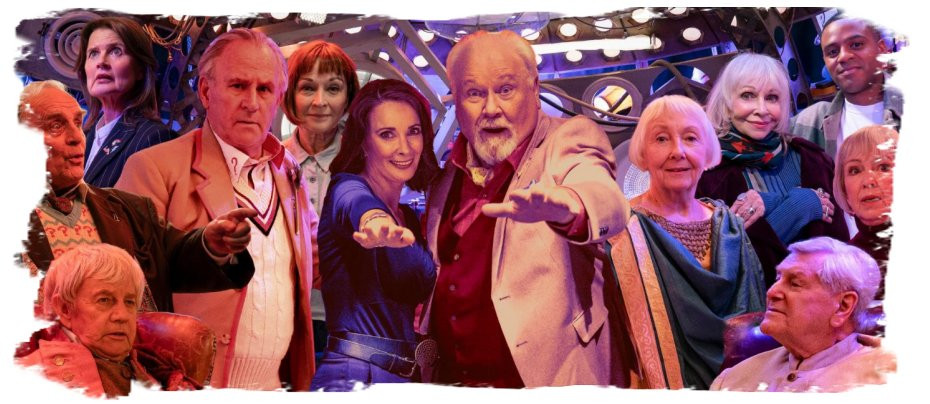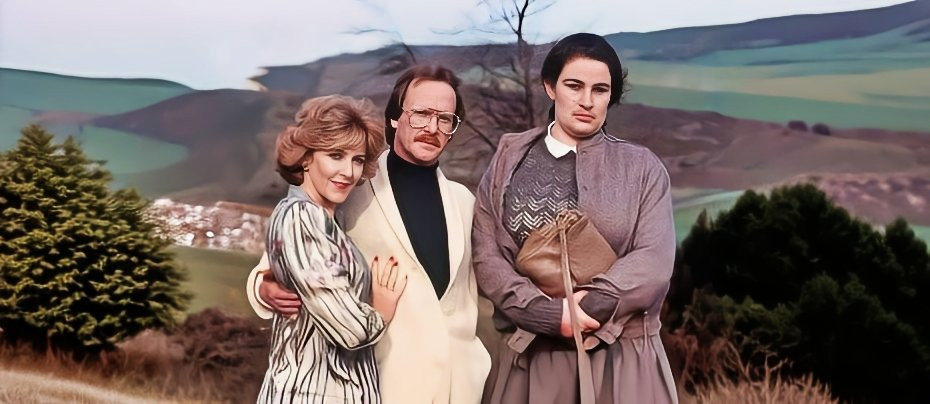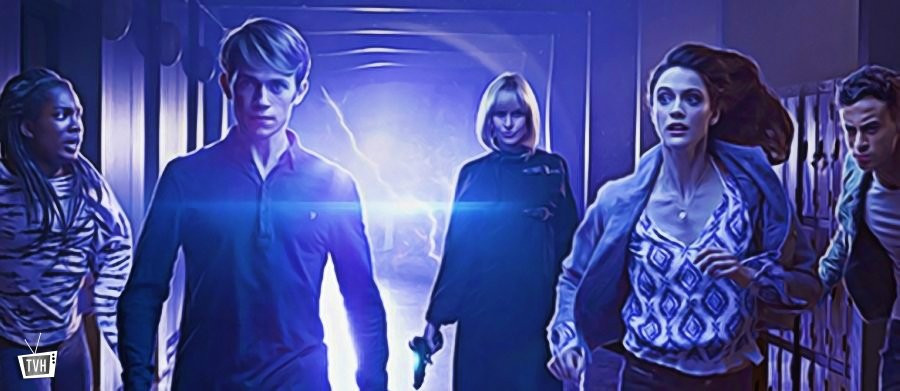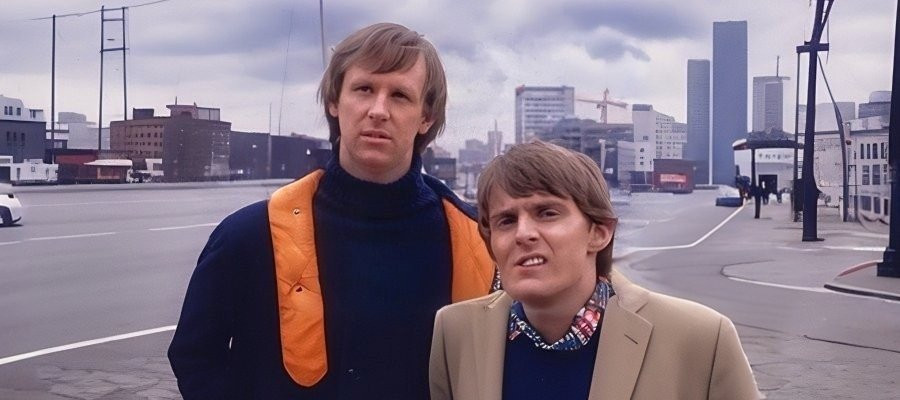The Arc in Space: Rejuvenation of a Time Lord
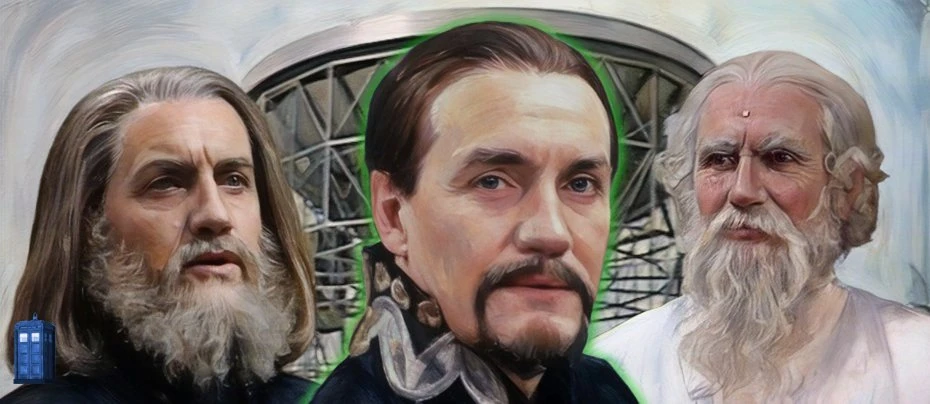
in Doctor Who's 'The Keeper of Traken', 'Logopolis' and 'Castrovalva'
Article by Andrew O'Day
It has long been recognised that the Doctor Who serials 'The Keeper of Traken' (1981), written by Johnny Byrne and script edited by Christopher H. Bidmead, 'Logopolis' (1981) and 'Castrovalva' (1982), written by Bidmead, form a trilogy with the return of the Doctor's arch nemesis, the Master. But there are other connections between the three serials forming a story-arc, whether intended by Bidmead or not. Like 'Castrovalva', 'Traken' was composed of fairy tale elements which were superseded by science, a Bidmead trademark, but the serials of the trilogy were also bound together in another way.
In 'The Keeper of Traken' the aged Keeper seeks to protect Traken but as the serial commences his time of dissolution is near. Under Traken law, the Keeper is replaced by another Trakenite in a form of rejuvenation. But the Master, who possesses Kassia, the Keeper nominate, under the guise of the statue Melkur, at first usurps the Keepership. While the Keeper presides over universal harmony, the Master is a figure who brings chaos.
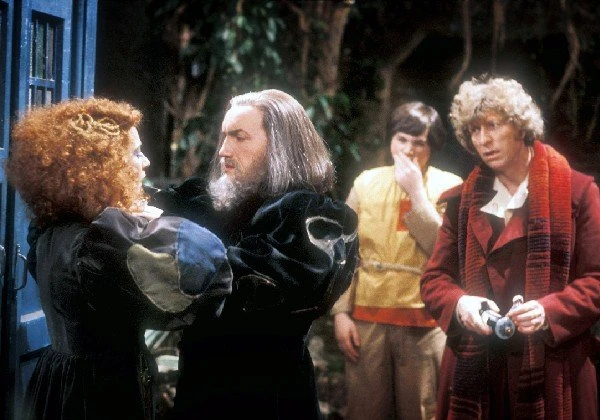
The Master is presented in decayed form as in the earlier Doctor Who 'The Deadly Assassin' (1976). He takes on the appearance of Death. He seeks renewal through different types of possession, a gothic theme, first of the Keepership but when that plot is foiled, of Tremas’ body. In ‘Logopolis’ he would go onto usurp the role of the Monitor who dies through a process of dissolution and to control the CVE, holding the future of the universe in his hands but using that power to become a dictator. However, this is not a literal possession of bodies as seen in ‘Traken’.
Connections have been noted between 'Keeper of Traken' and the 1976 Doctor Who serial 'The Brain of Morbius'. As Alan Stevens and Fiona Moore note, for example, there is the link of a powerful mystic flame tended by a dying old person. In 'Traken', the flame burns at full capacity while the Keeper lives but is extinguished when the Keeper dies until he/she is replaced.
There are also, however, links here between 'Traken', 'Logopolis' and 'Castrovalva' as all concern rejuvenation. In 'Logopolis', for instance, there is the idea of rejuvenation being prepared for. After the Doctor converses with the Watcher on the bridge in Part 2, he tells Adric that he has dipped into the future and that they must be prepared for the worst. In Part 3, the idea of preparing for the worst surfaces again and at the end of Part 4 when the Doctor regenerates and it is revealed that the Watcher was the Doctor all the time, the Doctor says 'It's the end but the moment has been prepared for'. It is, however, ultimately a positive renewal, despite what the Doctor originally says. This idea appears in a serial which concerns the potential destruction of the universe which is prevented.
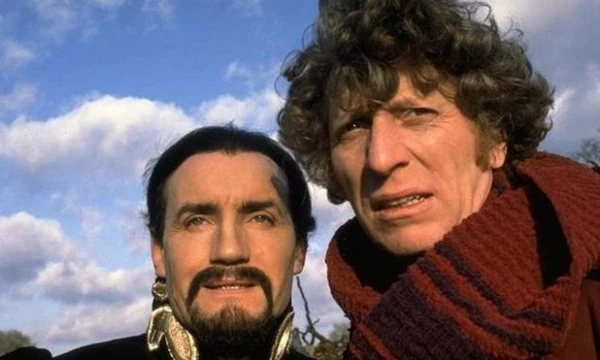
Castrovalva, meanwhile, at first appears to be a 'dwelling of simplicity' cut off from the rest of the universe and a place for healing and convalescing. There is a quest motif around which much of the second episode revolves. Nyssa and Tegan bring the vulnerable, newly-regenerated Doctor to Castrovalva. This is echoed by Paddy Kingsland's composition of long stretches of soothing pastoral music to accompany the visuals. Furthermore, in 'Castrovalva', the Doctor is carried in the Zero Cabinet, which is made out of the door of the jettisoned TARDIS Zero Room which was a place of healing. Castrovalva itself is meant to be an alternative Zero Room and Zero Cabinet.
There is a connection between ‘Castrovalva’ and 'Traken's use of the pastoral and the theme of rejuvenation. In 'Traken' the grove is an idyllic setting when the Keeper rules but where without the Keeper nature reverts to chaos. At first, however, even when Melkur/the Master, the serpent in the Garden of Eden, usurps the keepership, nature is calmed. But there is mention that the grove has become neglected as Kassia has driven the Fosters from the grove in her tending of Melkur. The pastoral of ''Castrovalva'' also harks back to one of the Doctor's TARDIS interiors in 'Logopolis' which appears garden-like but in that case was overgrown in a negative manner.
The Castrovalvan Mergrave is a key figure. The name of the character, Mergrave, is significant. The name resembles Merlin's, who was a healer in some Medieval Arthurian texts. Furthermore, Mergrave is the Master of Physic, a medieval Chaucerian title. Like the other Castrovalvans, he is defined by a symbol hanging from his waist. In this case, that is a bottle of medicine which he puts to practical use by, for instance, pouring a potion for the Doctor to drink. The colour of the potion is green which, as noted in the DVD commentary, was also a reference to Peter Pan. The colour of Mergrave's robe is furthermore significant. Like the music, it is soothing. It is pink, making the inside of Castrovalva resemble the comfortable pink of the Zero Room. Pink is commonly coded in our culture as a soft feminine colour.
The theme of rejuvenation is brought out further. Bidmead has noted the dual quality of the Zero Cabinet as being both a secure environment of rest and recuperation and a symbol of vulnerability (quoted in Marson 1986: 9) and Martin Wiggins comments that the box looks unsettlingly like a coffin (1995: 9). As in the earlier scene where the Doctor was being carried to Castrovalva in the Zero Cabinet, a box for recuperation, there is the scene of the cabinet being carried to the Portreeve's dwelling in an ordered march. But here that march resembles that of pall bearers carrying a coffin, with Kingsland's solemn and ceremonial incidental music, by contrast with the earlier pastoral tones, emphasising this. Mergrave states that the Doctor's condition is beyond his power to heal which is why the Doctor has been brought to the Portreeve's house. The Portreeve/Master believes he has control of The Doctor in the box but the cabinet actually contains the volumes of the History of Castrovalva and the Doctor thwarts the Master's plans making a recovery and is ultimately able to take control of another box: the TARDIS.
There are contrasts between ‘Traken’ and ‘Logopolis’ concerning rejuvenation of Time Lords. A distinction can be noted between the Melkur and 'Logopolis's Watcher. While the Melkur turns out to be the Master, the Watcher, whom Adric at first mistakes for the Master, turned out to actually be the Doctor and the positive transitioning form between the fourth and the rejuvenated fifth Doctor, as discussed earlier.
A contrast can further be seen between the appearance of the Watcher and that of the Master in 'Traken'. While, as noted earlier, the Master was portrayed as the ugly and decayed figure of Death, the Watcher is at the other end of life, looking, particularly in the regeneration scene, like a hatchling or a newborn. While hatchlings are not always pretty and can be bedraggled looking and covered in broken eggshell, the Watcher and the Doctor’s regeneration are more positive. This reading adds to that of the Watcher appearing ghostly when seen from a distance earlier in the serial.
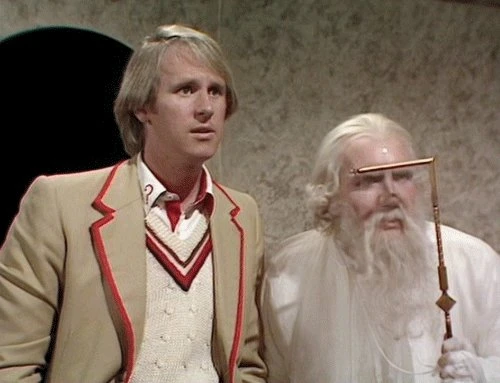
Moreover, there is a connection between the Keeper and the Castrovalvan Portreeve. First of all, it is important to note that the terms Keeper and Master are similar with both becoming one when the Master as Melkur at first usurps the Keepership. But both the Keeper and the Portreeve also have similar titles as the word Portreeve translates into doorkeeper (porte + reeve), despite the fact that the word actually comes down to us from Old English. Like the Keeper, who presides over Traken, the Portreeve appears to be an aged man who guards Castrovalva but who actually turns out to be the Master in disguise.
The Portreeve is therefore like the Melkur who turned out to be the Master, as opposed to being like the Watcher where both the Watcher and the Portreeve appear in white. While the Melkur/Master turned out to be seeking rejuvenation for himself (as he had reached the end of his life cycle), the Portreeve/Master is seeking to prevent the Doctor's successful rejuvenation in his newly regenerated form, despite the point that one of his created characters is Mergrave to tend to the sick Time Lord.
There is a connection between the endings of 'Traken', 'Logopolis' and 'Castrovalva'. 'Traken' ends with the decayed Master taking over the body of Tremas, after failing to usurp the Keepership, and appearing young again. This echoes the Master as Melkur usurping Kassia as Keeper at the end of Part 3. In both cases this is a negative gothic possession where Kassia and later Tremas are killed in the process. 'Logopolis' ends with the older fourth Doctor regenerating into the younger fifth Doctor after a fight with the Master, in a positive transformation contrasting with that at the end of 'Traken'. And 'Castrovalva' concludes with the fifth Doctor rejoicing in his new persona after thwarting the Master's plans to destroy him in a vulnerable state.
So this article has filled a gap in writing about Bidmead and the connections between the serials of 'The Master trilogy'. There are similarities just as there are links between 'Castrovalva' and another serial, Season 18's 'Warriors' Gate' (1981), written by Steve Gallagher and script edited by Bidmead. It is difficult to determine the full influence that Bidmead had over serials he script edited but it has been argued that he had a very hands on approach (see Rolinson 2007). Additionally, it is difficult to always attribute intent on Bidmead’s part to the readings made here.
References
'Interview - Christopher H. Bidmead' by Richard Marson in Doctor Who Monthly 109 (1986, 6-10); 'Who done it?: discourses of authorship during the John Nathan-Turner era' by Dave Rolinson in Time and Relative Dissertations in Space: critical perspectives on Doctor Who (Ed. David Butler, Manchester, Manchester University Press, 2007, 176-189); 'Season 18: Change and Decay Part 6: The Keeper of Traken' by Alan Stevens and Fiona Moore (Celestial Toyroom 313); 'Paradoxical Paradise' by Martin Wiggins in In Vision 55 Castrovalva (Ed. Anthony Brown, 1995, 9-10).
Thanks go to Lewis Baston for helpful suggestions.


